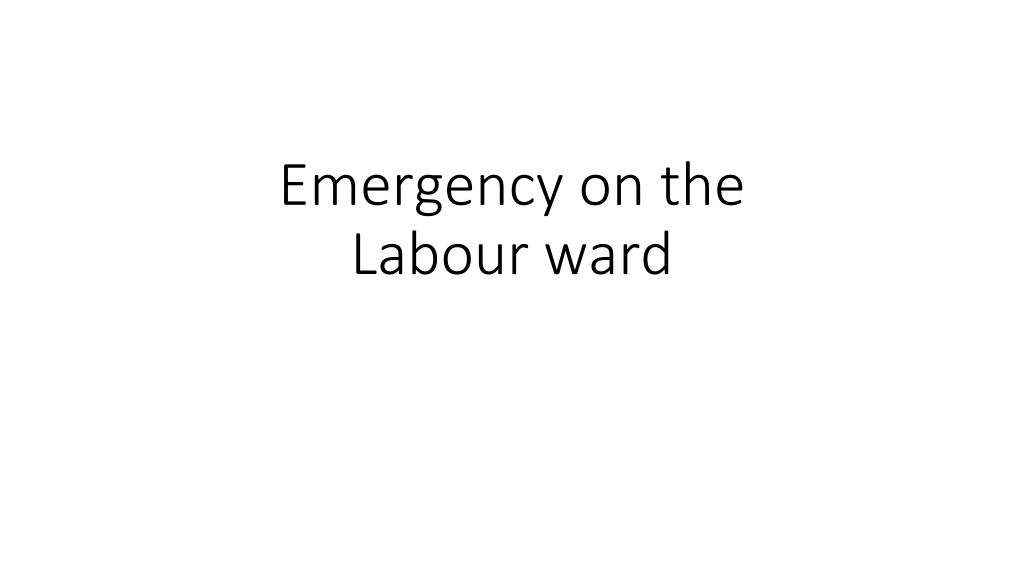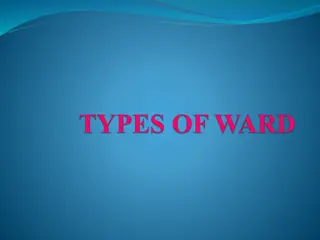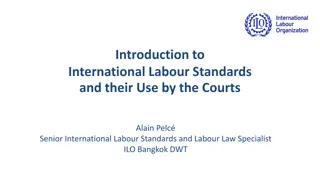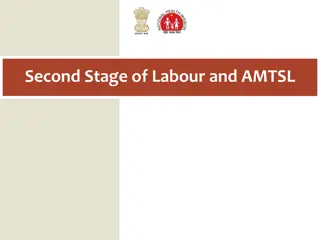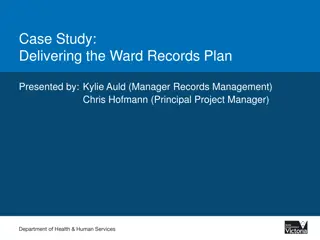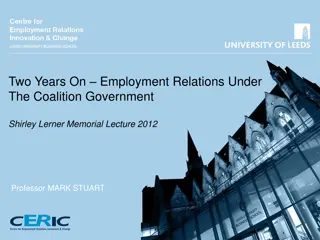Emergency on the Labour ward
In the midst of urgency, the Labour ward faces unpredictable challenges that demand immediate attention and precise action to ensure the safety of both mother and child. This fast-paced environment requires quick thinking and effective communication to navigate through critical situations.
Uploaded on Feb 22, 2025 | 0 Views
Download Presentation

Please find below an Image/Link to download the presentation.
The content on the website is provided AS IS for your information and personal use only. It may not be sold, licensed, or shared on other websites without obtaining consent from the author.If you encounter any issues during the download, it is possible that the publisher has removed the file from their server.
You are allowed to download the files provided on this website for personal or commercial use, subject to the condition that they are used lawfully. All files are the property of their respective owners.
The content on the website is provided AS IS for your information and personal use only. It may not be sold, licensed, or shared on other websites without obtaining consent from the author.
E N D
Presentation Transcript
Emergency on the Labour ward
Maya 26 P0+1 at 36+5. You are the obstetric FY2 on call for triage. The student midwife has asked you to come and assess Maya urgently. She presented following ?rupture of membranes in Tesco earlier. When the midwife examined her she thought she could feel SOMETHING in the vagina but isn t sure what it was. What could it be?
What to do 1 2 3 4 Finish your lunch Who ever did the examination maybe isn t used to what they re palpating Ask the MW to pop on the CTG and do a set of obs and you ll be there once the ward round is finished Phone a friend you hate triage and maybe someone else can go Ask the midwive to get the patient to move onto all 4 and you ll be there ASAP
Click wrong box/ correct box Woops! Sorry this wasn t the most clinically current option. Please try again
Well done! You are correct ! This lady requires your urgent attention and further assessment.
Assessment of Maya You attend maternity triage and do a vaginal examination. On palpation you can feel something in the vagina, its warm and feels pulsatile. What is going on?
1. Footling Breach What are you palpating 2. Cord prolapse
Correct This is a cord prolapse What is a cord Prolapse? Cord prolapse has been defined as: the descent of the umbilical cord through the cervix alongside (occult) or past the presenting part (overt) In the presence of ruptured membranes.
As part of your assessment of Maya you take a history. Which aspects of this history increased Maya s risk of having a cord Prolapse
Mayas history At 20 weeks scan showed breech presentation Maya has gestational diabetes Midwife appointments baby has mostly been cephalic but was oblique last week. Maya has a family history of diabetes and her mum was pre-eclamptic with her but nothing else of note. This is Maya s second baby and she had a long labour with her first.
Risk Factors Multiparity Low birthweight (< 2.5 kg) Preterm labour (< 37+0 weeks) Fetal congenital anomalies Breech presentation Transverse, oblique and unstable lie Second twin Polyhydramnios Unengaged presenting part Low-lying placenta Amniotomy with high presenting part Manipulation of foetus with ruptured membranes ECV IPV Balloon catheter induction Application of scalp electrode
The umbilical cord
Pathophysiology 3 main functions of cord. Delivery Oxygen Nutrients Remove CO2. 2 mechanisms reduce blood flow to foetus Cord is physically compressed by foetus against pelvis Vasoconstriction of the cord either by handling or exposure to cold air reduces blood flow. Results in foetal hypoxic acidosis = pH < 7.20
This is a cord Prolapse! Now what do you do?
Your Options. Please list from highest to lowest priority 1 2 3 4 5 6 7 Push it back up and proceed to deliver normally Attach CTG and see what it says Get patient into knee to chest position Pull the emergency buzzer Put out a 2222 call for the anaesthetist and obstetrician Support/ elevate the presenting part off the cord Administer tocolysis (Terbutaline 250mcg SC)
Definitive management Cat 1 section and deliver baby
C-section categories Cat 1 Immediate threat to the life of the woman or fetus < 30 mins from decision to delivery Cat 2 - Maternal or fetal compromise that is not immediately life- threatening < 75 mins from decision to delivery. Cat 3 - No maternal or fetal compromise but needs early delivery Cat 4 - Elective delivery timed to suit woman or staff
Summary Incidence 0.5-1% High perinatal mortality *THIS IS A CLINICAL EMERGENCY* Risk factors (as discussed) Management Call for help/declare the emergency. elevation of presenting part (no handling of cord) Maternal position (knee/chest or left lateral with head down) Monitor fetus (ctg) Tocolysis Cat 1 LUSC
